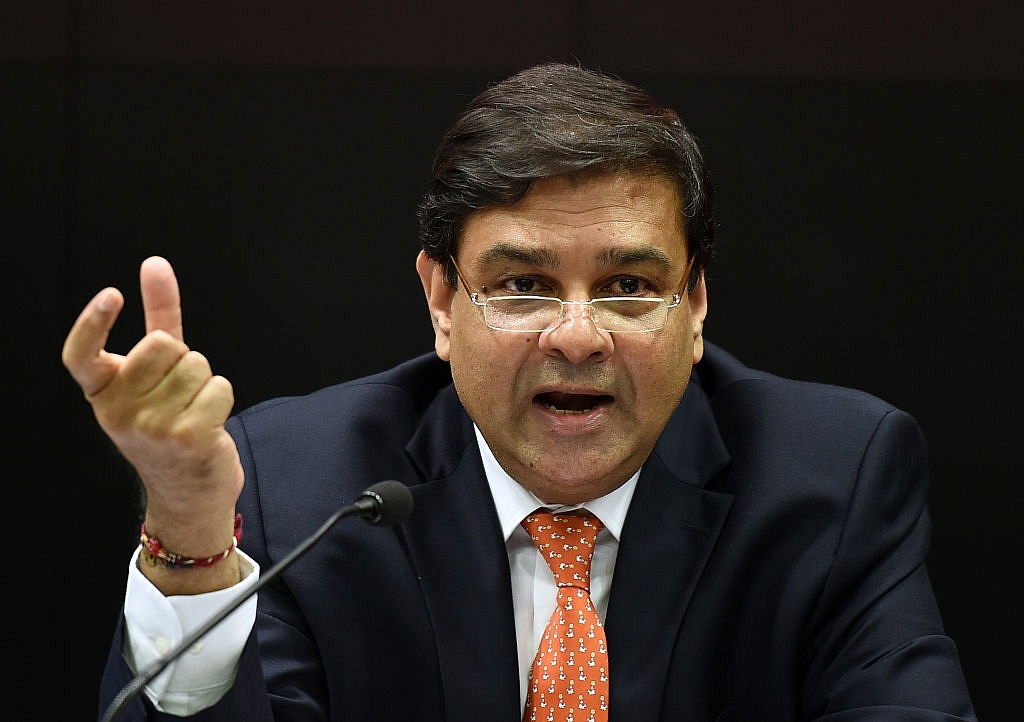Economy
Governor Urjit Patel Must Take A Deep Breath And Offer A 50 Bps Rate Cut On 7 June
- Governor Urjit Patel has a golden opportunity to push growth without stoking inflation.
- He should grab it with both hands and offer a deep cut in the repo rate.

Dr Urjit Patel must cut interest rate to spur growth. (PUNIT PARANJPE/AFP/GettyImages)
The case for a rate cut has never been stronger. So, when the Monetary Policy Committee (MPC) meets on 6 and 7 June, it should recommend a 50 basis points cut in the repo rate.
The last two policies saw the MPC and the Reserve Bank of India (RBI) turning cautious. They have been fretting more about inflation and less about growth, with the February policy shifting the central bank’s credit stance from “accommodative” to “neutral”. The April policy maintained status quo.
Luckily for the Indian economy, the demonetisation of high-value notes in November last year created a huge cash surplus with the banking system, enabling them to cut deposit rates and also lending rates on retail loans.
But the latest GDP figures for 2016-17 show that the economy could do with another pick-me-up from the monetary side, now that inflation seems tame.
In April, retail inflation fell below 3 per cent and wholesale inflation printed at 3.85 per cent. Both inflation numbers are well within the RBI’s target of 4 per cent.
The sharp deceleration in GVA (gross value added) from 7.9 per cent last year to 6.6 per cent in 2016-17, and in the fourth quarter from 8.7 per cent in January-March 2016 to 5.6 percent this year, suggests that growth is a much bigger challenge than inflation right now. More so when GST implementation from 1 July will seek to raise higher revenues. If this happens, it will have a temporary deflationary impact.
Manufacturing activity has also slowed in May, with the Nikkei Markit India Manufacturing Purchasing Managers’ Index (PMI) falling to 51.6 from 52.5 in April. Though this is still positive, indicating the manufacturing is still expanding, it still marks a weakening from the previous month.
There are three reasons why the RBI needs to offer a deep cut in the repo rate, currently standing at 6.25 per cent.
One, at the current repo rate, real returns are more than 3 per cent. This is more than adequate for savers.
Two, the sheer weight of debt is too high for India Inc, and a cut in rates will offer some relief.
Three, and possibly most important, with over Rs 7 lakh crore of bad loans, banks need to generate higher profits from their securities portfolio. A 1 per cent cut in rates gives banks treasury profits of Rs 150,000 crore; a half per cent cut gives them Rs 75,000 crore. Even as it tries to settle bad loans with its new powers, the RBI can aid the process by enabling banks to generate more profits from their treasury desks.
With fiscal policy on course, with the rupee stable (and thus providing a backstop against importing inflation), with the monsoons predicted to be near normal this year, this is the time to focus on growth rather than inflation.
Governor Urjit Patel has a golden opportunity to push growth without stoking inflation. He should grab it with both hands and offer a deep cut in the repo rate.
Support Swarajya's 50 Ground Reports Project & Sponsor A Story
Every general election Swarajya does a 50 ground reports project.
Aimed only at serious readers and those who appreciate the nuances of political undercurrents, the project provides a sense of India's electoral landscape. As you know, these reports are produced after considerable investment of travel, time and effort on the ground.
This time too we've kicked off the project in style and have covered over 30 constituencies already. If you're someone who appreciates such work and have enjoyed our coverage please consider sponsoring a ground report for just Rs 2999 to Rs 19,999 - it goes a long way in helping us produce more quality reportage.
You can also back this project by becoming a subscriber for as little as Rs 999 - so do click on this links and choose a plan that suits you and back us.
Click below to contribute.
Latest